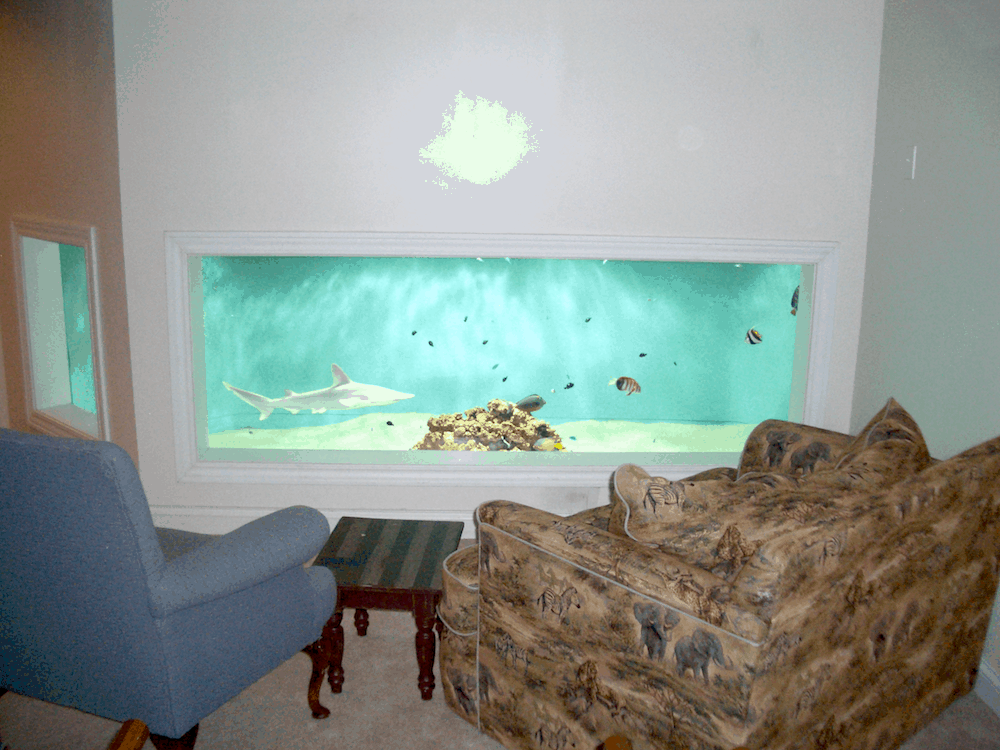
In this article, we are going to turn our attention to rebate design. A rebate is the frame that holds an acrylic window in position and it is very important that these are installed correctly to avoid leaks and damage to the window itself.
The truth is many leakage issues are a result of poor rebate design and inadequate preparation of rebate surfaces.
So let’s get to it, today again we will be using the Handbook of Acrylics as a resource. But first, let’s cover some more basic information about rebates.
Acrylic window rebates can be either concrete or steel. One great thing about Seaquatic Aquariums is that we create our own rebates and we install them.
Many other companies aren’t capable of providing these services and as a result leaks have a greater chance of occurring in their aquariums.
We design our rebates, then cast or weld them in our own facility before transporting them to your site and installing them.
We are basically a one-stop shop for aquariums. We design, fabricate and install the acrylic sheets. This way you can rest assured that you are getting a finely crafted aquarium that will be leak-free.
Once the rebates are installed and waterproofed, we prepare the acrylic panel surfaces that will be inserted into the rebates. Once the acrylic panels are put into position and aligned we secure them and proceed to the aquarium waterproofing.
When it Comes to Installations, the Best Installations Are the Simplest Installations
And when it comes to rebates, it is recommended that there be a concrete blockout larger than the panel size, typically one inch all around.
This blockout needs to be waterproofed prior to the panel being set and sealed. Temporary brackets or shoring should be used to hold the panel in place until the tank is filled.
The water pressure should be what holds the panel in place. It is good practice to reinstall the temporary clamps or shoring onto the panels prior to draining a tank.
The silicone sealant should not be considered in the calculations for panel support.
If the tank is to be drained often or the geometry of the panel is such that the water pressure is not sufficient to hold the panel in place, then permanent clamping or supports should be considered.
Window Cavity
The blockout for the acrylic panel needs to be bigger than the panel. This is to facilitate the silicone sealant and to allow for the straps used during installations to be removed.
In extreme cases where panels are so heavy that larger straps are needed and one inch would not be enough, gaps can be enlarged.
When the gap gets to be over two inches wide, special siliconing techniques need to be used to obtain a proper watertight seal.
Bearing Support
The acrylic panels need to be fully supported on the bearing face. The industry standard is to set the panel in the window cavity, set back slightly from the concrete.
The gap between the panel and the concrete is then filled with a non-shrink grout, thus providing a continuous even bearing condition.
The compressive strength of acrylic is three to four times greater than the best concrete, so as long as there are not large rocks in the mix, point loading will not be a problem to the acrylic panel.
The grout/concrete will give way before the acrylic panel.
The bearing surface of the acrylic is recommended to be at least three inches in concrete and equal to the panel thickness up to eight inches.
The minimum bearing surface allows for general construction tolerances and also insures that there is room for rebar with coverage in the bearing area.
The bearing being equal to the thickness is good practice to keep the edge of the panel out of view.
Sealing
The waterproofing seal for large acrylic panels used in aquaria is structural silicone. It is not proper to use the physical properties of the silicone as part of the structural design and support of the acrylic panels.
The silicone should be used and considered only for the watersealing function.
Installation
Panels are delivered to the window openings in the concrete wall by best means (dollies, cranes, forklifts, etc.). Nylon slings are used to lift panels and place them in the window openings.
The panels are placed on setting blocks. Temporary retaining clamps are used to secure the panels. The panels are then grouted into place.
Once the grout is cured, room temperature vulcanizing silicone sealant is applied to the joints between the acrylic and the tank. There will be a primary (wetside) seal and a secondary (dryside) seal. The silicone is left to cure.
Upon filling of the tank, there is an inspection for leaks. If a leak is discovered at the silicone joint, there are techniques that have been developed that will stop the leak without having to drain the tank.
